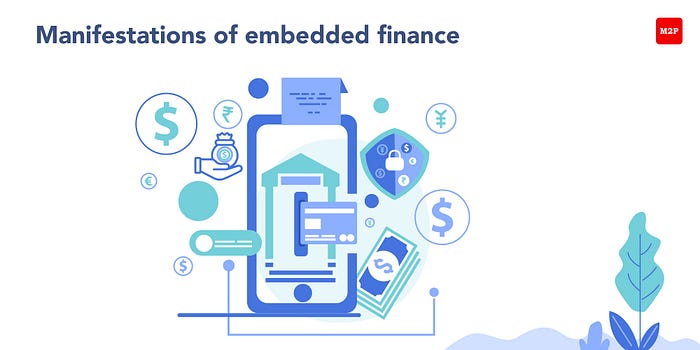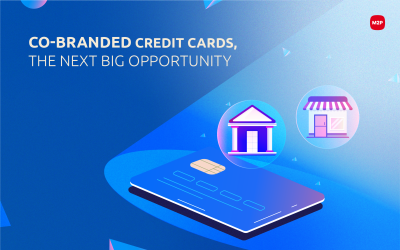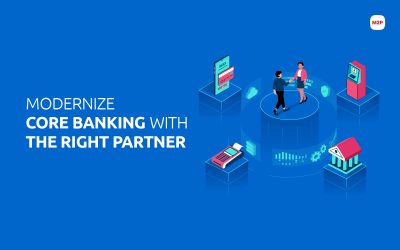
New-age markets demand robust, scalable, and secure payment solutions to future-proof cashless payments and cross-border money transfers. Fintechs today need to be empathetic of industry pain points, deploy futuristic technology trends and comply with regulatory authorities to stay ahead of the game.
2020 witnessed a sharp surge in digital payments, driven by the dramatic shift in consumer priorities and expectations triggered by the pandemic. Businesses underwent a phenomenal digital transformation to increase agility, resilience and meet customer expectations. Cashless and contactless payments using digital and cryptocurrencies played a significant role in ensuring safety, speed, convenience, and seamlessness. Governments and regulatory bodies supported the push for contactless, cashless, digital payments to contain the Covid contagion, enhance financial inclusion, and promote trade and commerce.
Enhance customer experience, conversions, and profitability
As we transitioned into 2021, customers and businesses grew accustomed to the universe of quick online transactions. Seamless checkouts and cashless payments emerged as crucial factors to increase conversion rates, enhance customer experiences, satisfaction and retention. Online businesses across industries noticed that over 81% of their customers abandoned carts when faced with slow payment page loads, bug-infested transaction processing, and when customers had to key in payment-related details repeatedly. Consumers began preferring players who offer seamless digital transactions and enhanced experiences.
Soon businesses, banks, and financial institutions realized that the strength, security, and speed of their payment processing systems dictated customer experience, retention, and profitability. This insight convinced businesses to foster beneficial Fintech partnerships for payment processing. According to recent Markets and Markets reports, the global payment processing solutions market size grew to a whopping $74.4 billion in 2020 and is expected to grow further at 10.2% CAGR to $120.7 billion by 2025.
Industry agnostic digitization
Digital payments processing is not limited to any particular industry. Fintech Application Programming Interfaces (APIs) are ubiquitous and can be customized and deployed across verticals below.

- BFSI
- Government and Utilities
- Telecom and IT
- Healthcare
- Real Estate
- Retail and E-commerce
- Media and Entertainment
- Travel and Hospitality
- Educational Institutions
- Non-Governmental Organizations (NGOs)
Disruptive saviors – security threats, silos, and time-to-market
With cybersecurity attacks rising every day, online businesses, banks, and financial institutions (FIs) face enormous risks in data breaches, information theft, and financial losses. Siloed legacy payment systems infested with redundancies result in interoperability issues, poor data quality, and data access threats. They lack the bandwidth to handle seasonal shifts and surges in transactional volumes.
Though some banks and FIs tried to build in-house efficiencies to support payment processing, they suffered from technology inadequacies, focus diversion, and longer time-to-market. They struggled to deliver customer protection, stability, and regulatory compliance.
This was when Fintech solution providers emerged as disruptive saviors, resolving all the payment processing issues discussed above. The Fintech adoption is so pervasive that the Boston Consulting Group (BCG) and FICCI reports predict that, in India alone, the Fintech industry will reach $150–160 billion by 2025 from $50–60 billion in (2020–21).
Fintech solution providers play a crucial role in quickly building, maintaining, and supporting transaction systems, customer onboarding, and full eKYC. Their innovative, secure, cutting-edge APIs facilitate end-to-end payment processing and support. The API integrations enable businesses to achieve cost savings, operation efficiency, security, and go-to-market speed.
Besides being innovators and technologists, Fintechs are empathetic towards individual business needs. Understanding customer pain points and operational nuances, they close gaps through efficient integrations, customizations, scalability, and compatibility. Working together with compliance authorities and regulators, Fintechs instill trust and address non-cash payment risks effectively.
Futuristic trends in payment processing
Fintech companies are one of the most dynamic disruptors of our time. They redefine possibilities and accelerate growth by constantly evolving and unlocking value in the payments space. It does not matter if the transactions are cross-border or within the country, or in traditional or cryptocurrencies, Fintech solution providers can tailor payment processing to satisfy business/customer expectations and regulatory compliances.

Irrespective of industry, size, or scale, the future belongs to players who get ahead in the game by adopting the futuristic payment processing trends below.
1. Embedded Finance Infrastructure
2. Payments as a Service (PaaS)
3. Banking as a Service (BaaS)
4. Digital and Cryptocurrencies
5. DLT and Blockchain
6. Biometric Payment System
7. Mobile Payments
8. Contactless Payments
9. Real-Time Payments (RTP)
10. AI-based Payments
Embedded finance infrastructure
With a market size of over $250 billion (Fintech TV Digital Asset Report), embedded finance infrastructure is the future of payments. It has the potential to reduce Fintech barriers by 10X and enable MSMEs and small B2C companies to offer financial services to their customers. Reshaping the distribution model for financial services, embedded finance shines by enabling native financial experiences to customers, accelerating growth, and improving margins.
For example, embedded finance infrastructure can enable a retail or ride-sharing company to provide payments, lending, and insurance services for its customers in the following forms.

· Embedded payments
· Embedded credit
· Embedded investment
· Embedded insurance
· Embedded banking
Fintech firms deliver customized embedded finance infrastructure to businesses by rapidly integrating innovative financial service APIs into their system. Enterprises can save on costs by partnering with Fintechs for embedded finance infrastructure.
Payments as a service (PaaS)
PaaS is a cloud-based payments service that enables any business to offer a plethora of financial services ranging from card issuance, real-time payments clearance, cross-border payments, money transfers, and e-commerce gateways to customers.
Without any high upfront investment, businesses can outsource payment processing to Fintechs and benefit from faster deployments, greater savings, and relentless business focus. PaaS is also highly secure and scalable, with the capability to handle surges in transaction volumes and continuously upgrade itself without exorbitant maintenance investment.
As the cost and revenue are API usage-based or transaction-based, there is a considerable potential to save money in PaaS. Businesses can leverage this one-stop-shop cloud-native platform to manage payment processing and servicing requirements in a cost-effective manner. As PaaS empowers enterprises to outsource the entire payment stack to Fintechs, they get the liberty to focus their time and effort on strategic initiatives such as partnerships, marketing, distribution, etc.
Banking as a Service (BaaS)
Slated to grow tremendously between 2020 and 2026, Banking as a Service (BaaS) is the next big innovation in payments. This service can be cloud-based or API-based, allowing online businesses, FIs, and even Fintech companies in the payments space to look and function more like banks. Any business can offer digital banking services such as mobile bank accounts, debit cards, loans, and payment services, as part of its portfolio without acquiring a banking license of its own.
Banks can lease out their infrastructure to enable BaaS. Or Fintechs and Third Party Service Providers (TPSPs) can deliver BaaS to enterprises on a subscription basis in partnership with licensed banks. Going beyond traditional outsourcing models, BaaS handles the complete spectrum of end-to-end banking operations through APIs. It not only delivers technology and operational support but also assists in product and service design, regulatory compliance, and risk management.
Digital and cryptocurrencies
Digital currencies and cryptocurrencies will be one of the biggest disruptors for years to come in the world of Fintech. Gone are the days when cryptocurrencies had an ill reputation for supporting illicit online payments and money laundering. Today decentralized cryptocurrencies such as Tether, Ethereum, Bitcoins, and Ripple enable transparent, secure, and fast cross-border payments. As central banks are out of the equation, businesses and consumers profit from quick settlements and cost benefits. According to Report Linker research, the global cryptocurrency market today in 2021 is valued at $1.6 billion and is expected to grow at 7.1% CAGR to $2.2 billion by 2026. Leveraging crypto cards, consumers can also use cryptocurrencies to buy traditional currencies.
Central banks, however, consider cryptocurrencies as a looming risk. To bring digital transactions under the purview of central banks and monetary authorities, economies actively develop Central Bank Digital Currencies (CBDCs). CBDCs are nothing but regular national currencies in digital format. A recent BIS survey suggests that over 60% of central banks worldwide consider CBDCs, and 14% are actively conducting pilot tests. Bahamas is the first country to launch digital fiat, the Sand Dollar, for retail usage. Countries such as China, Sweden, Thailand, Singapore, UK, and Japan are also making giant strides by creating their own digital currencies. CBDCs will have enormous economic and financial implications and reshape the cross-border payments ecosystem by offering greater stability, regulatory compliance, and consumer protection.
DLT and blockchain
Distributive Ledger Technology (DLT) is the brain behind the game-changing cryptocurrency revolution. And blockchain is a type of DLT framework that is tamper-proof, secure, and efficient. Cryptocurrencies that run on blockchain use cryptographic hashing and decentralization to prevent identity theft and enable secure cross-border payments and KYC verifications in a hassle-free manner.
Cutting down operational inefficiencies, DLT based cross-border payments are cost-efficient, highly secure, and transparent. As the ledger is decentralized and distributed across peer-to-peer networks, there is absolutely no way to hack or steal information from blockchain networks. According to market digits research, the Fintech blockchain market size is expected to grow at a gargantuan CAGR of 75.9% to reach $ 6.2 million by 2027. Market leaders like Mastercard, Paypal, Fidelity, JP Morgan, and BN Paribas are a few among the many quickly launching crypto services to capitalize on this growth opportunity.
Biometric payments
Using fingerprints, cornea, voice, and face-based recognition systems for data access and entry may not be a particularly new technology. But using these biometric identifications to validate identity and enable payments is hot across industries.As consumers prioritize contactless payments with increased emphasis on cybersecurity, privacy, and surveillance, businesses are adopting biometric payment systems rapidly. The rise in mobile payments and the need for security has driven the growth of the global biometric payments market at a whopping 49% CAGR from 2019 to 2027 (ResearchandMarkets.com). Fintech companies understand the market appetite and offer robust APIs for embedding biometric solutions into the payment process.
Mobile payments
Expected to hit $4.6 trillion by 2025 (Vending Market Watch report), the mobile payments market will only catapult as long as humans use smartphones. Even geographies with unbanked or underbanked populations have access to mobile phones with data connection today. And over 4.3 billion people worldwide are expected to own smartphones by 2023 (Oberlo research).
Fueled by the pandemic and the need for speed, convenience, and seamlessness, businesses rely on Unified Payments Interface (UPI) and mobile wallets such as Apple Pay, Google Pay, and Samsung Pay to deliver touchless and cashless payments. But the buck doesn’t stop here. Businesses also offer cash rewards and cashback to their loyal customer via mobile apps.
Today, seamless mobile payments with great fund transfer speed serve as key differentiators for brick n motor and digital businesses. Fintechs partner with businesses to deliver innovative mobile money and payment solutions and APIs to cater to UPI, Unstructured Supplementary Service Data (USSD), Bharat Interface for Money ( BHIM), Bharat QR, and mobile wallet payments requirements.
Contactless payments
Driven by safety, security, and convenience factors, consumers in today’s pandemic era prefer phygital (amalgamation of physical and digital) retailers who offer contactless payment options at the point of sale. The coherent market insight research reveals that the global contactless payments market was valued at $11.2 billion in the pre-pandemic 2019, and is projected to grow to $ 26.3 billion by post-pandemic 2027. Leveraging this billion-dollar opportunity, Fintechs enable banks, FIs, and other phygital businesses to deliver contactless payments facilities to their customers.
Contactless payments technologies enable customers to pay by tapping a physical card or hovering a wearable or a smartphone over a card reader. And technologies such as mPOS (mobile Point of Sale), Near Field Communication (NFC), Quick Response (QR) Code, and RFID (Radio-frequency identification) that come with biometric authentication enable contactless payments. Internet of Things (IoT) offers an intelligent way to make contactless payments and even cross-border money transfers using smart speakers and home assistants such as Alexa and Google Home. As more and more homes adopt smart speakers for speed and convenience, the market for smart speaker payments is expected to grow phenomenally. Businesses with cashier-less checkouts, self-scanning apps, and contactless payments have the potential to accelerate in-store, omnichannel, and cross-channel customer experiences and satisfaction levels.
Real-Time Payments (RTP)
Growing at a phenomenal 33% CAGR, the real-time payments market is predicted to reach $99.73 billion by 2028 (Grand View Research). Its ubiquity, enhanced security features, speed, convenience, data accuracy, and transparency make it one of the most loved futuristic advancements in the world of digital payments. The RTP is a game-changer that stands apart from the real-time authorization that card transactions offer, where funds are not immediately available to sellers.
As opposed to conventional card transactions, in RTP, the credit to the seller is done in an instant. Also, the notifications and confirmation messages are more transparent, accurate, and comprehensive. In fact, global banks believe that real-time payments are the foundation for growth and new product enhancements, beneficial to customers, businesses, economies, and societies alike. To enable RTP processing, companies prefer Fintech partnerships over in-house deployments, as Fintechs deliver faster go-to-market speed, enhanced security, and convenience.
Artificial Intelligence (AI) in payments
Innovations in AI have consistently played a significant role in driving digitization, fraud management, customer engagement, and data analysis in the payments industry. As the finance sector shifts more towards automation and smarter payments, the need for AI and Machine Learning (ML) in particular becomes imperative. AI drastically improves customer satisfaction and reduces costs, and is critical in preventing fraudulent payments. The Report Linker research predicts that the AI market in Fintech will grow at a gigantic 23.17% CAGR from $7.91 billion in 2020 to $26.67 billion by 2026.
Today, payment processing systems cannot survive without AI. Banks, FIs, and other businesses leverage the expertise of Fintechs to integrate APIs with AI into their financial systems instead of diverting resources in AI application building and maintenance. These APIs help them enhance customer experience, reduce cost, and increase payment security.
Conclusion
Drastic shifts in customer behavior, expectations, and technological advancements cause the world of payments to evolve every day. However, futuristic trends such as embedded finance infrastructure, Banking/Payments as a service, cryptocurrencies, CBDCs, DLT, blockchain, mobile-based payments, contactless payments, biometric authentication, RTPs, and AI applications have the potential to improve customer experience and profitability.
To leverage these innovations to the fullest and to steer clear of payment issues, you need Fintech partners who are experts in robust, scalable, and customized API integrations that can future-proof payments processing for you.
To know more about payments processing, write to us at business@m2pfintech.com.




Pretty nice post. I simply stumbled upon your weblog and wanted
to mention that I’ve really enjoyed browsing your weblog
posts. In any case I will be subscribing to your feed and
I’m hoping you write again very soon!